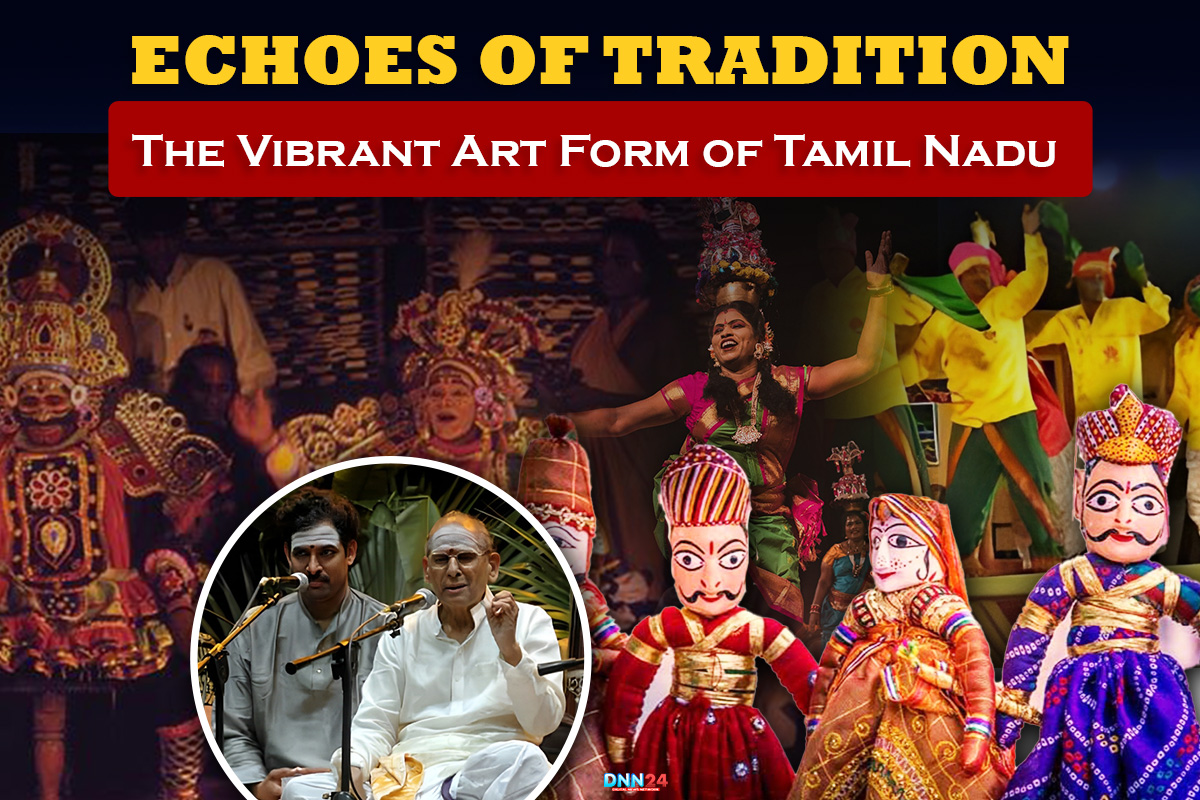Tamil Nadu represents a territory that maintains a vibrant artistic tradition through numerous expressive art expressions. Traditional art and cultural practices of the state reveal the profound artistic capabilities of the people in Tamil Nadu. In Tamil Nadu art functions as an essential aspect of daily life which people hand down to their descendants. The state’s profound spiritual heritage together with its historical traditions find their artistic expressions in dance, music and crafting activities.
The art forms of Tamil Nadu evolved through many centuries under the rule of the Chola dynasty and Pandya dynasty and Pallava dynasty. Throughout-tool periods the artistic expressions grew under different dynasties which turned Tamil Nadu into an essential center for Indian classical and folk arts. Many of these art forms display temple and religious influence since devotees used them to express their spirituality before the gods.
The original meaning of these traditional practices continues to exist while they have developed through time. People today strive to maintain these long-standing traditions in order to maintain their practice for the next generation. The exploration of art in Tamil Nadu starts with inspecting its dances along with music and folk arts and handicrafts.
Traditional Dance Forms of Tamil Nadu
Bharatanatyam – The Divine Dance
Bharatanatyam is the most famous classical dance form of Tamil Nadu, known for its grace, elegance, and deep spiritual connection. It is one of the oldest dance forms in India and has its roots in the temples of Tamil Nadu. When temple dancers named ‘Devadasis’ conducted the performances they offered Bharatanatyam as worship to deities.
Bharatanatyam contains three essential performing elements that include hand gestures through mudras alongside graceful postures along with bhavas which deliver facial expressions. Hindu mythology traditionally inspires the dance interpretation through narratives which extract the major themes from Ramayana and Mahabharata. The performer chooses a traditional outfit made of rich silk textiles with gold trimmings and beautiful accessories. Traditional music used in Bharatanatyam dance performances consists mainly of Carnatic music while the mridangam instrument provides essential rhythmic foundation through its execution.
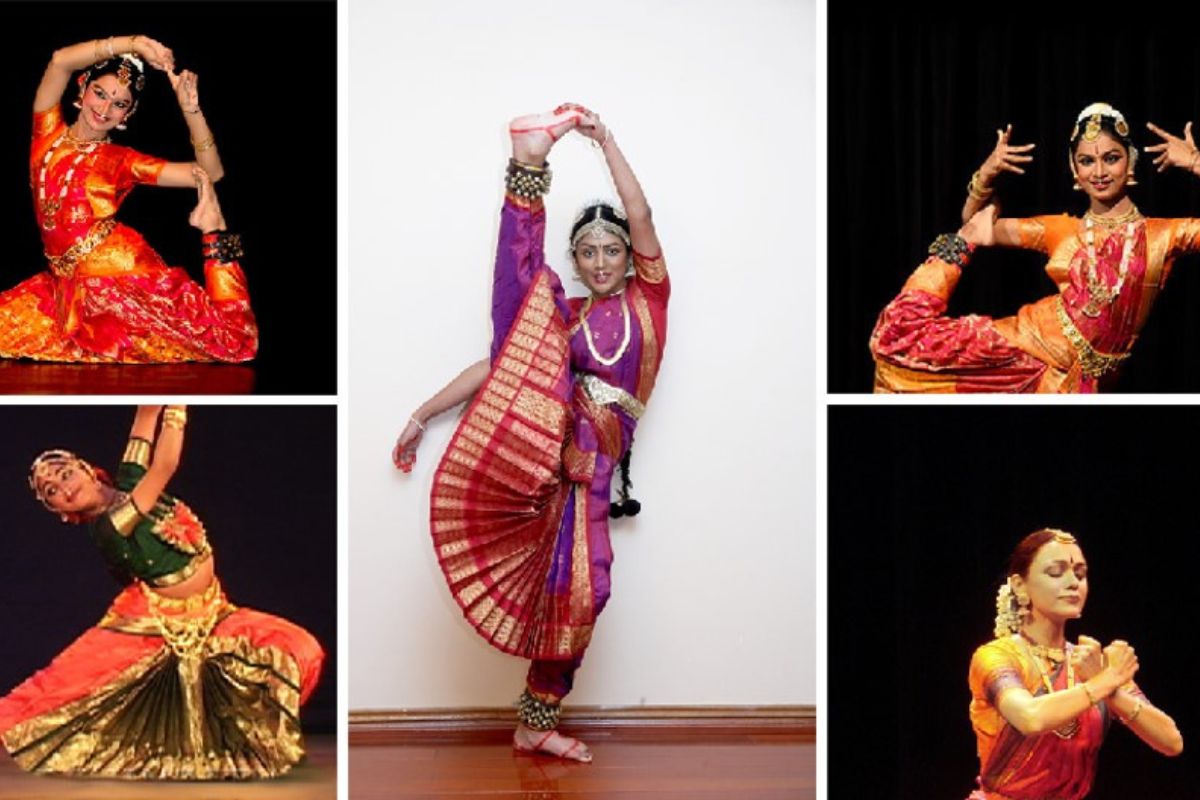
As an origin from temple arts Bharatanatyam has evolved into an international dance form today. Many prestigious dance academies teach Bharatanatyam, and it continues to be an essential part of Tamil Nadu’s cultural heritage.
Karakattam – The Dance of Balance
Karakattam is a unique folk dance of Tamil Nadu that involves balancing decorated pots (karagam) on the dancer’s head. People perform this dance to honor Mariamman who brings bountiful rain for obtaining wealth and abundant harvests.
Karakattam exists in two forms: Aatta Karakam brings entertainment to audience members but Sakthi Karakam serves to make spiritual offerings in temples. The dancers showcase extraordinary skills through their acrobatic ability and swift movements when maintaining the balance of the decorated pots. The musical pieces for Karakattam carry a high-energy tone and include performance on thavil and nadaswaram instruments.
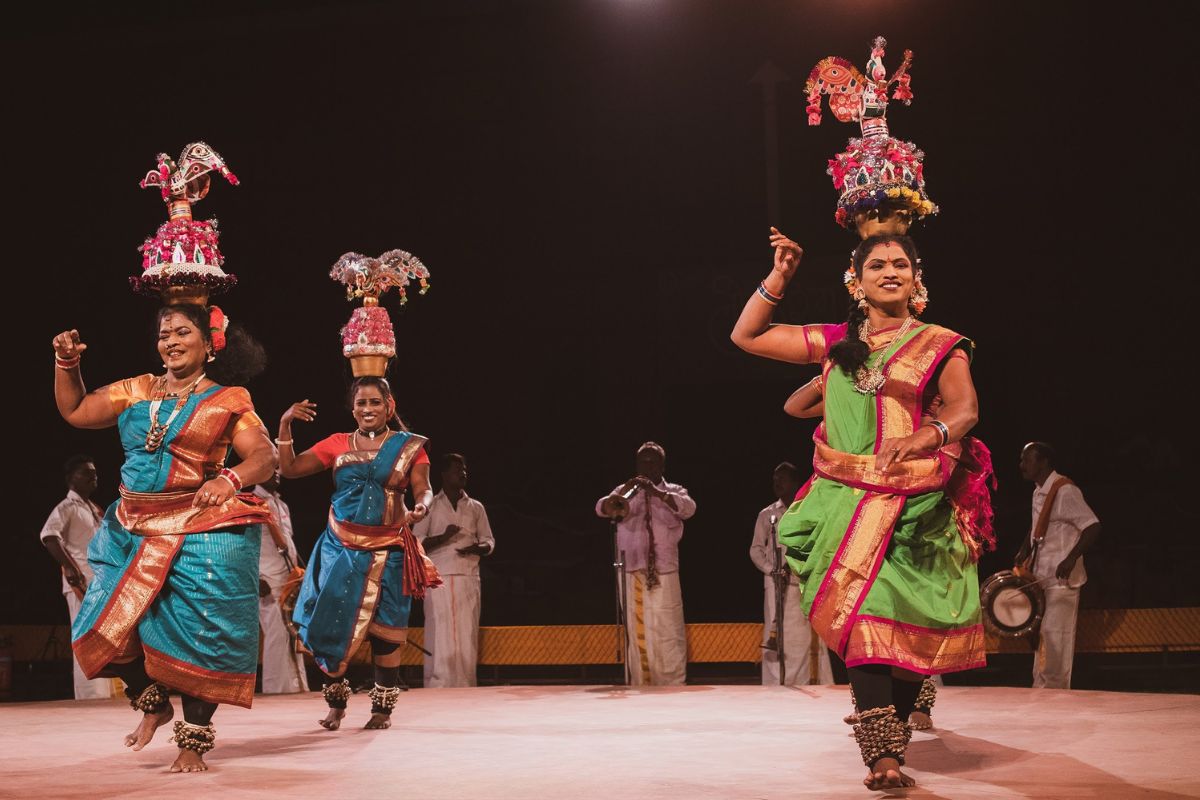
Karakattam is an important part of Tamil Nadu’s village festivals and temple celebrations. Through its lively performances Karakattam both exhibits elaborate skills and balances while uniting community members in entertaining festivities.
Mayilattam – The Peacock Dance
Sometimes known as Mayilattam, Peacock Dance honors Lord Murugan who serves as the Tamil god of war and wisdom. The dancers perform this dance in elaborate costumes that imitate a peacock through its birdlike feathers alongside an ornamental headpiece.
People usually perform this dance at religious temples together with celebrations honoring Lord Murugan. The performance dancers duplicate peacock dancing skills so spectators witness an attractive visual dance presentation. Through this artistic performance people can simultaneously express their devotion to the Hindu deity.
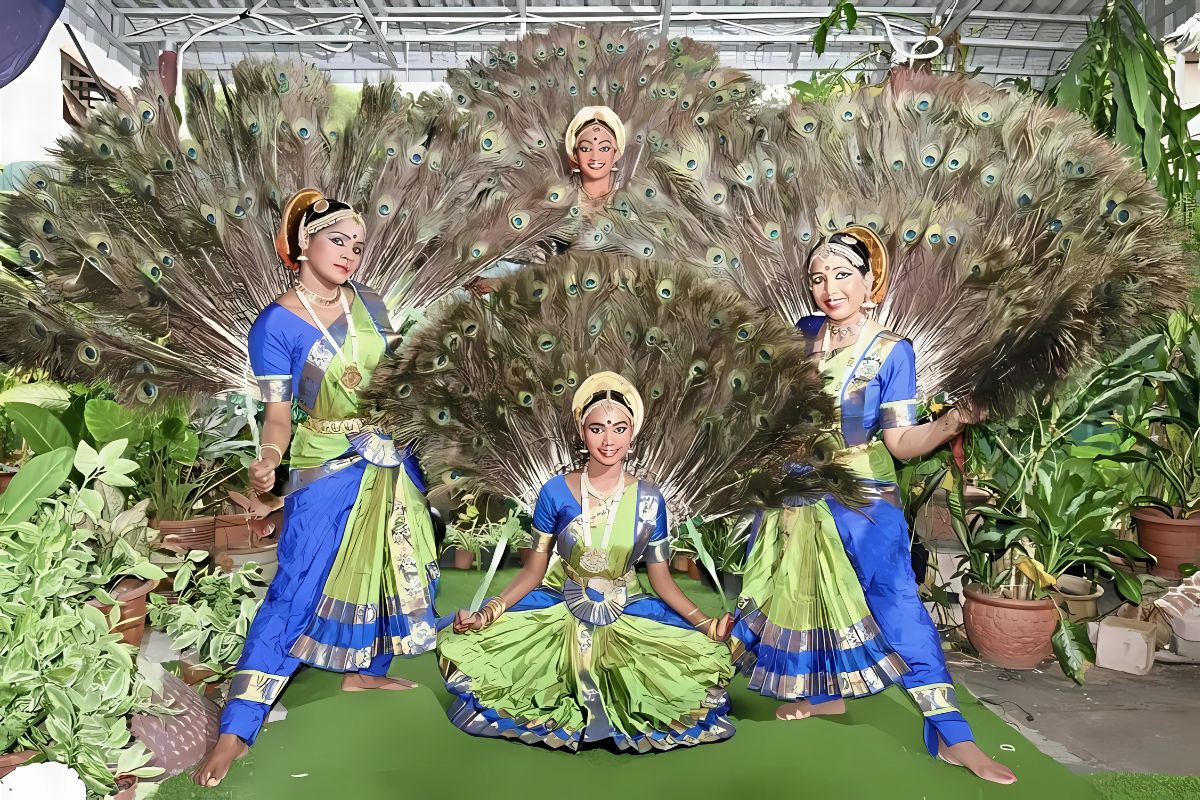
Mayilattam is mainly performed in rural areas of Tamil Nadu and plays a significant role in temple festivals and religious processions. People continue to love this traditional folk dance because it shows the profound sacred elements found in Tamil culture.
Oyilattam – The Graceful Folk Dance
Oyilattam, meaning “dance of grace,” is a traditional dance form of Tamil Nadu that was once performed only by men. Both female and male performers now partake in the performances of this energetic dance.
Members of the dance group use small pieces of cloth while following musical rhythms to perform accurately in an ensemble motion. The movements in Oyilattam consist of elegant steps that require careful dancer coordination. Oyilattam is performed during temple festivals and village gatherings, making it an integral part of Tamil Nadu’s folk traditions.
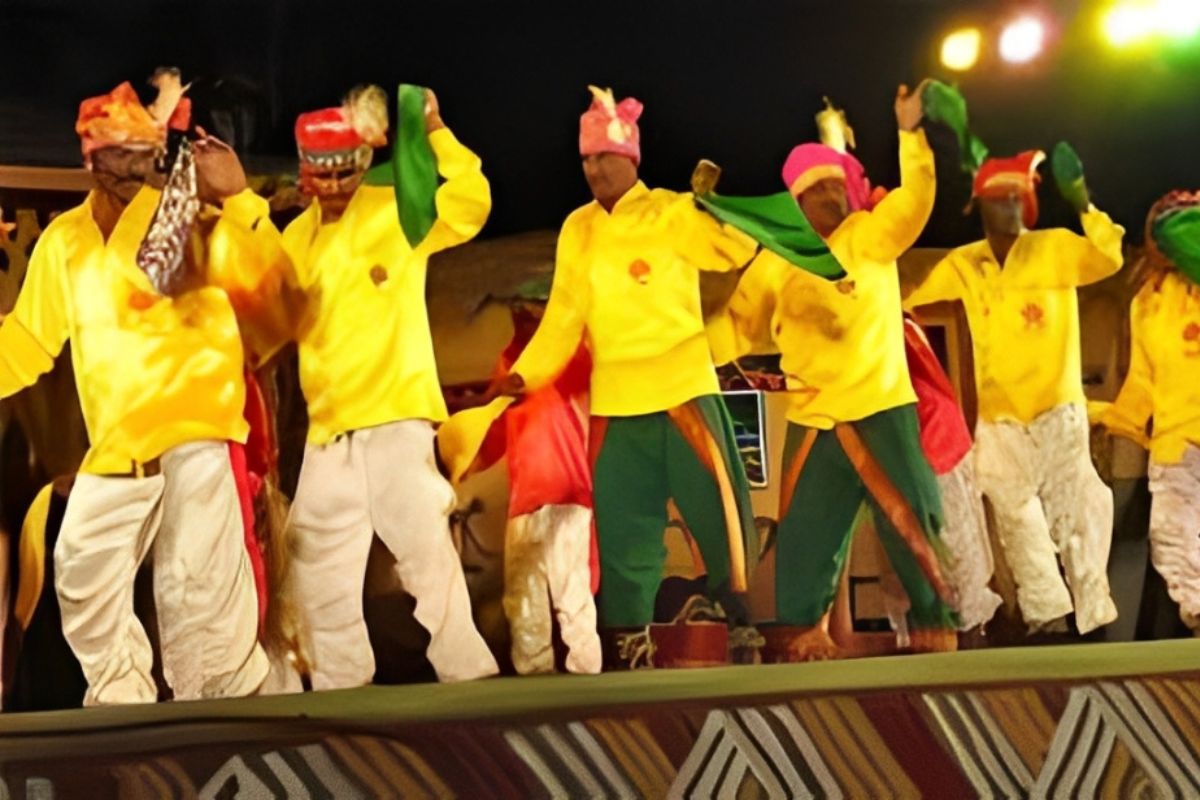
Oyilattam earned extended recognition away from villages to perform on larger stages as the Tamil folk tradition gained prominence. It remains one of the most visually appealing folk dances of Tamil Nadu.
Traditional Music of Tamil Nadu
Carnatic Music – The Soul of Tamil Nadu
Carnatic music is one of the oldest forms of Indian classical music, and it holds a special place in the cultural history of Tamil Nadu. Spiritual connection drives Carnatic music which performs in temple venues as well as religious gatherings and musical events. The musical system of Carnatic music comprises rigid schemes of ragas and talas which establish this art form as an intricate traditional musical tradition.
According to Hindu philosophical writings including the Vedas Carnatic music developed into existence during ancient times. During the three successive dynasties of the Pallava, Chola and Vijayanagara it received further development. Some of the greatest composers of Carnatic music, including Thyagaraja, Muthuswami Dikshitar, and Syama Sastri, were from Tamil Nadu. The musical compositions written by these musicians under the title kritis are still performed worldwide by present-day artists.
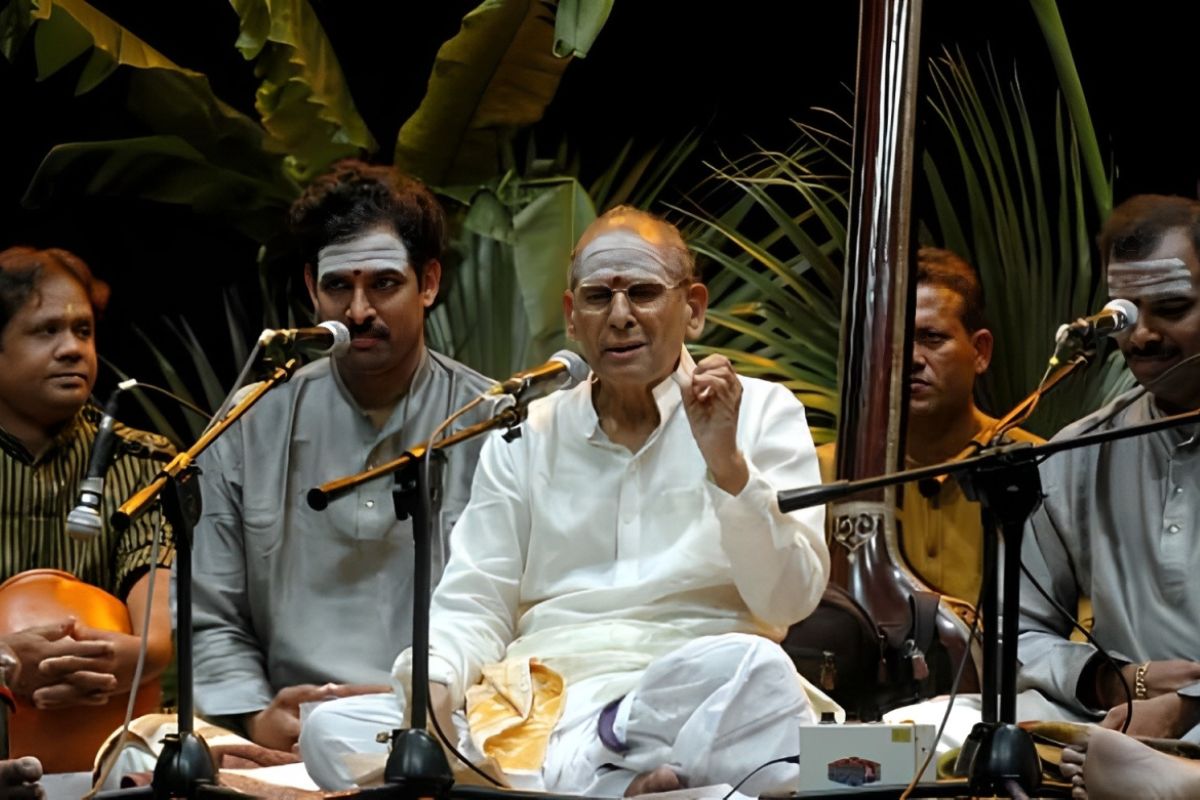
The veena along with mridangam and violin and flute are indispensable musical instruments in Carnatic music concerts. Performance events commence with warm-up song varnam that leads into multiple kritis along with improvisations and rhythmic sequence patterns. The prestigious music schools of today along with the major music festival of Chennai during Margazhi season continue to promote the performance of Carnatic music. It remains an integral part of Tamil Nadu’s artistic and cultural heritage.
Nadaswaram – The Auspicious Instrument
The nadaswaram is a traditional wind instrument of Tamil Nadu, often considered one of the loudest non-brass acoustic instruments in the world. The instrument maintains a close relationship with religious ceremonies and cultural events which include sacred temple festivals along with marriage ceremonies. The instrument produces a rich and powerful sound, making it a vital part of Tamil Nadu’s musical traditions.
The nadaswaram music receives support from the thavil drum because this barrel-shaped instrument provides depth to the musical performance through rhythmic elements. During temple processions musicians perform this instrument while they lead sacred entities through the streets thus filling the setting with holy melodies. Mastering the nadaswaram instrument requires substantial practice since performers usually play Carnatic raga-based music.
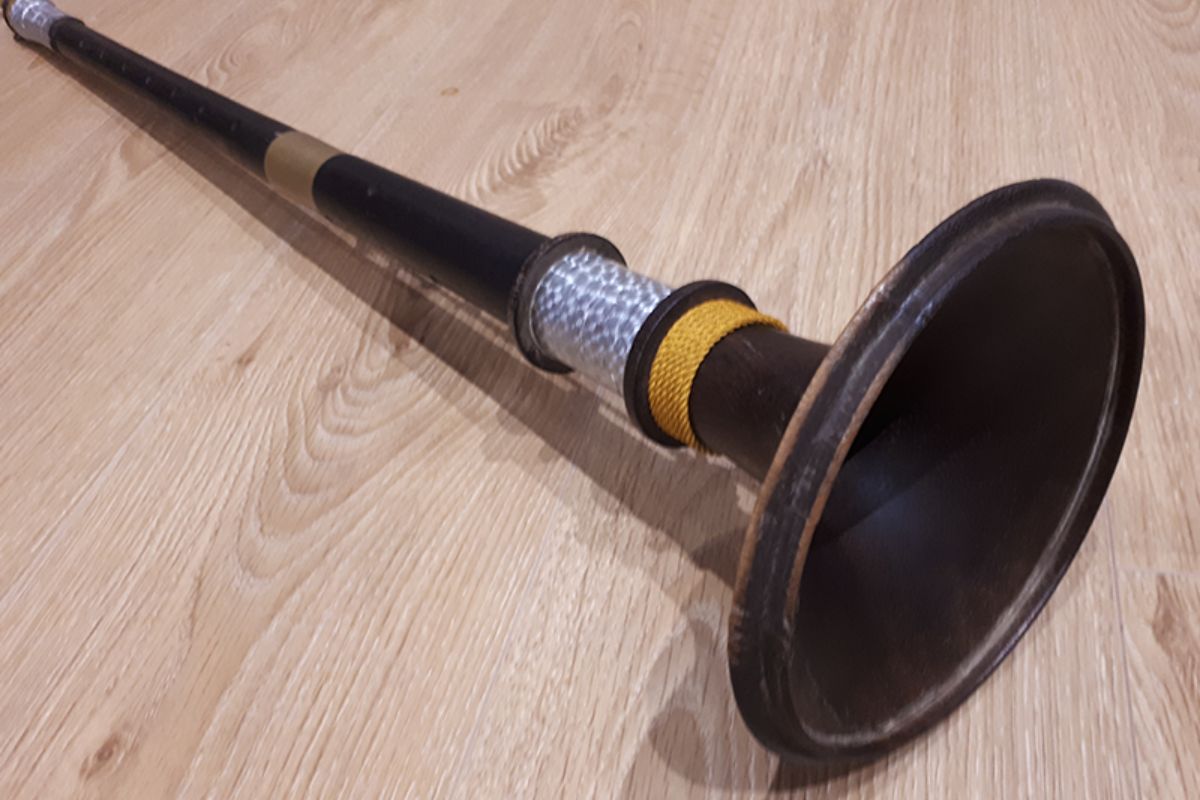
Various well-known artists of the nadaswaram instrument ensure the continuing presence of this musical tradition. A Tamil wedding lacks completion and temple events fail to satisfy without hearing the performance of a nadaswaram today. This instrument upholds its status as a prosperous symbol along with portending good fortune in Tamil cultural traditions.
Folk Arts of Tamil Nadu
Therukoothu – The Street Theatre
Therukoothu, meaning “street drama,” is one of the most vibrant folk arts of Tamil Nadu. Traditional Tamil theatrical performances unite sung musical scores with dancing movements to communicate stories about mythology and history along with social instructions. The stage artists dress in ornate outfits and apply thick makeup along with eye-catching headdresses to maintain audience interest.
During religious festivals Tamil cultural performers stage Therukoothu theater on open locations between village squares and temple courtyards. The performers present tales from epic works such as the Mahabharata and Ramayana during Therukoothu performances. Actors interactively connect with their audience by using humor alongside dialogues and dramatic expressions during the stage production.

Scenes from Therukoothu have functioned as a communication platform to inform audiences about caste discrimination as well as women’s rights and corruption in society. Despite modernization, Therukoothu continues to be a cherished folk art form in Tamil Nadu, preserving the essence of traditional storytelling.
Puppetry – The Ancient Storytelling Tradition
Puppetry is an age-old form of storytelling in Tamil Nadu, where puppets made of wood, cloth, or leather are used to narrate stories from folklore, mythology, and historical events. The art of puppetry has been practiced for centuries and remains an important part of Tamil Nadu’s cultural landscape.
There are different types of puppetry in Tamil Nadu, including string puppets (bommalattam), shadow puppets, and glove puppets. Bommalattam stands as the most favored puppet style through which skilled puppeteers operate detailed string-operated dolls. Through their artistic movement patterns and audio variations the puppeteers make the characters alive.
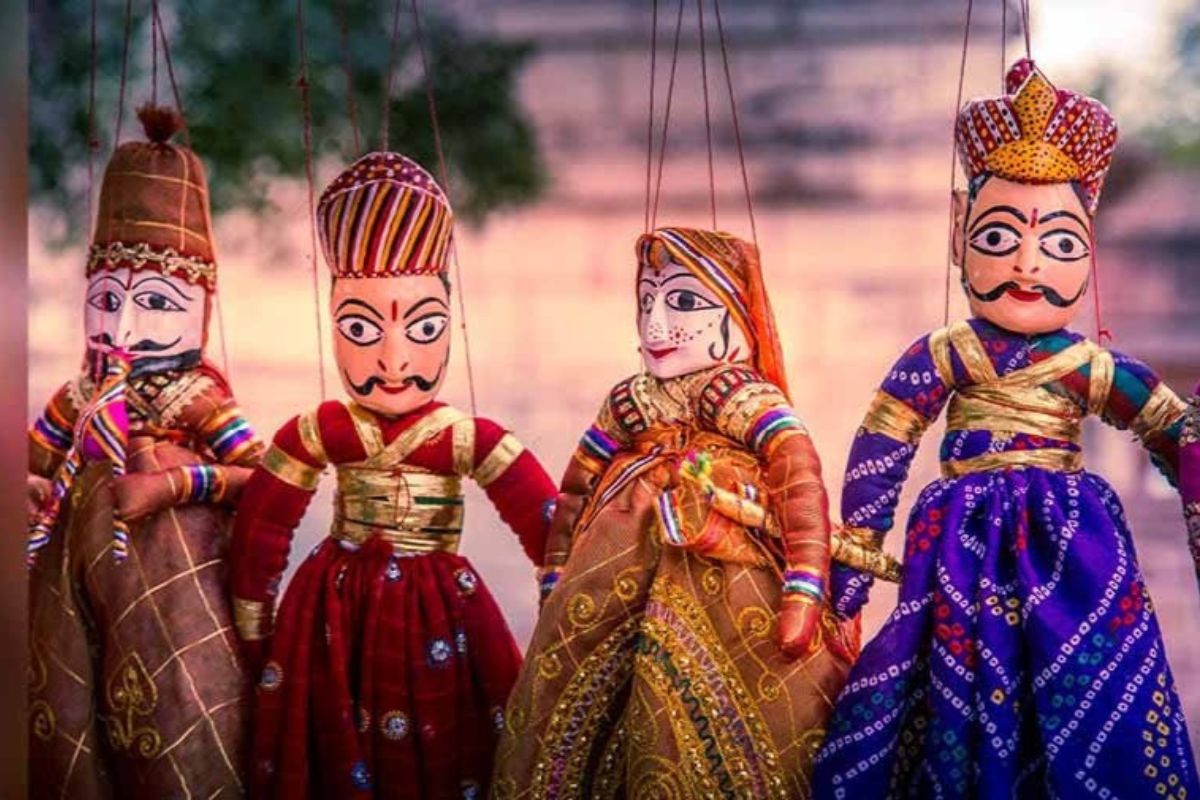
Traditional music together with dialogues enhance puppetry performances which successfully attract audiences from all generations. Puppetry’s diminishing popularity due to modern entertainment still receives support through school-based and cultural festival programming that promotes its practice.
Silambam – The Martial Art of Tamil Nadu
Silambam is an ancient martial art form that originated in Tamil Nadu more than 2000 years ago. The Tamil warriors first developed this self-defense system as well as military tactics for battle. The main tool of Silambam practice is a bamboo staff that practitioners manipulate with precision to fight against or repel enemy attacks.
Silambam martial techniques include rapid foot movements as well as spinning techniques and calculated strike methods. Other weapons such as swords, knives and shields are part of the comprehensive teaching curriculum in Silambam training. Since ancient times Silambam existed as military training in traditional Tamil schools known as gurukuls.
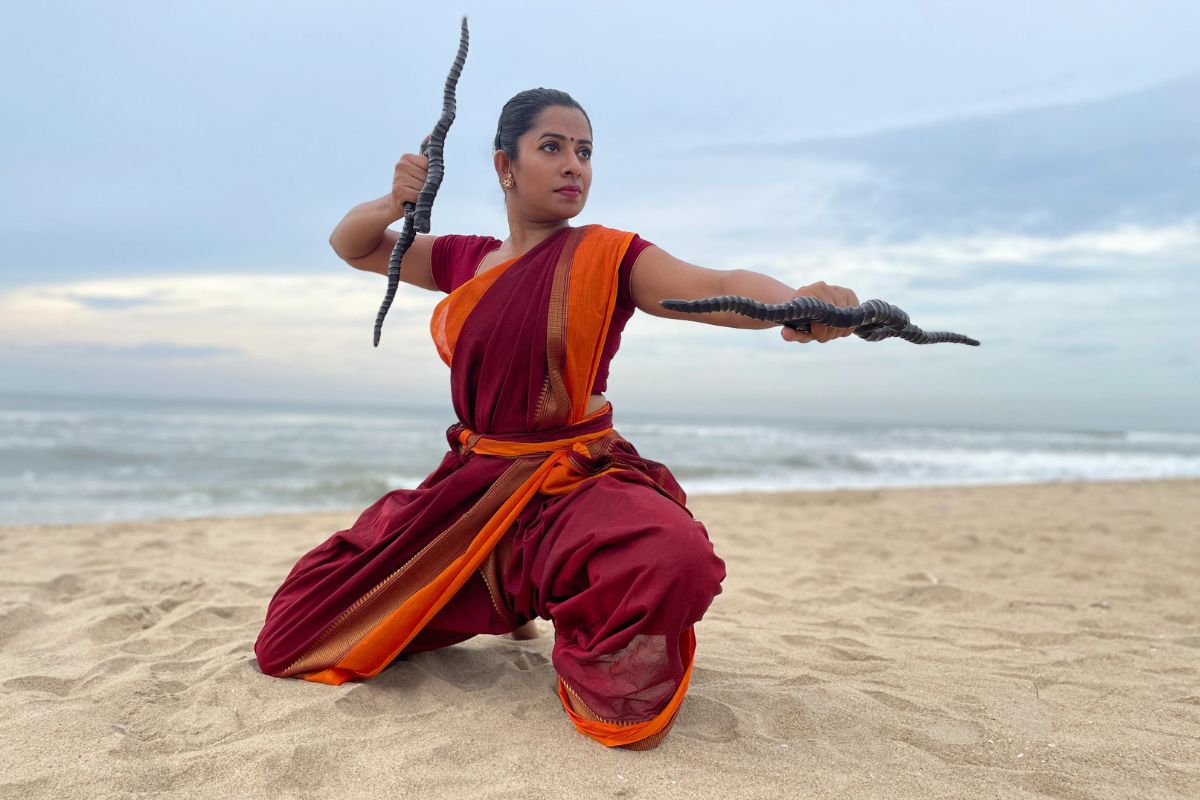
Today, Silambam is recognized as an important cultural and sports activity in Tamil Nadu. It is performed during temple festivals and cultural events to showcase the martial skills of Tamil Nadu’s ancestors. The traditional martial art Silambam can be taught at numerous schools and academies which supports its future survival.
Painting and Handicrafts of Tamil Nadu
Tanjore Painting: The Golden design
Tanjore painting is one of the most famous art forms of Tamil Nadu, known for its rich colors, gold foil embellishments, and religious themes. The tradition of painting emerged in Thanjavur during the time of the Chola dynasty rule. The main subjects portrayed through this art are Hindu deities and the most popular characters include Lord Krishna, Lord Vishnu and Goddess Lakshmi.
artists create Tanjore paintings through natural pigment work that requires complex ornamental techniques. Gold foil embellishments create a heavenly and noble visual effect in the artwork. People commonly utilize these framed artwork as home decorations and temple embellishments.

Even today, Tanjore painting remains a highly respected art form, with many artists continuing to create stunning pieces that reflect Tamil Nadu’s cultural heritage.
Kanchipuram Silk Weaving – The Pride of Tamil Nadu
Since ancient times Kanchipuram silk weaving has established itself as a traditional textile practice which gained international acclaim. These Kanchipuram sarees hold high status among India’s finest products because of their enduring quality and complex craftsmanship. Mulberry silk pure silk lets weavers produce these sacrosanct sarees that showcase temple architecture motifs together with nature elements and mythological symbols.
Kanchipuram offers employment to many silk weaving artisans who create each handcrafted saree through meticulous efforts. Weavers dedicate long periods of weeks to months in order to create one saree while carefully addressing each element. The zari work consisting of gold and silver threads provides exclusive luxury to these sarees thus earning high value in the market.
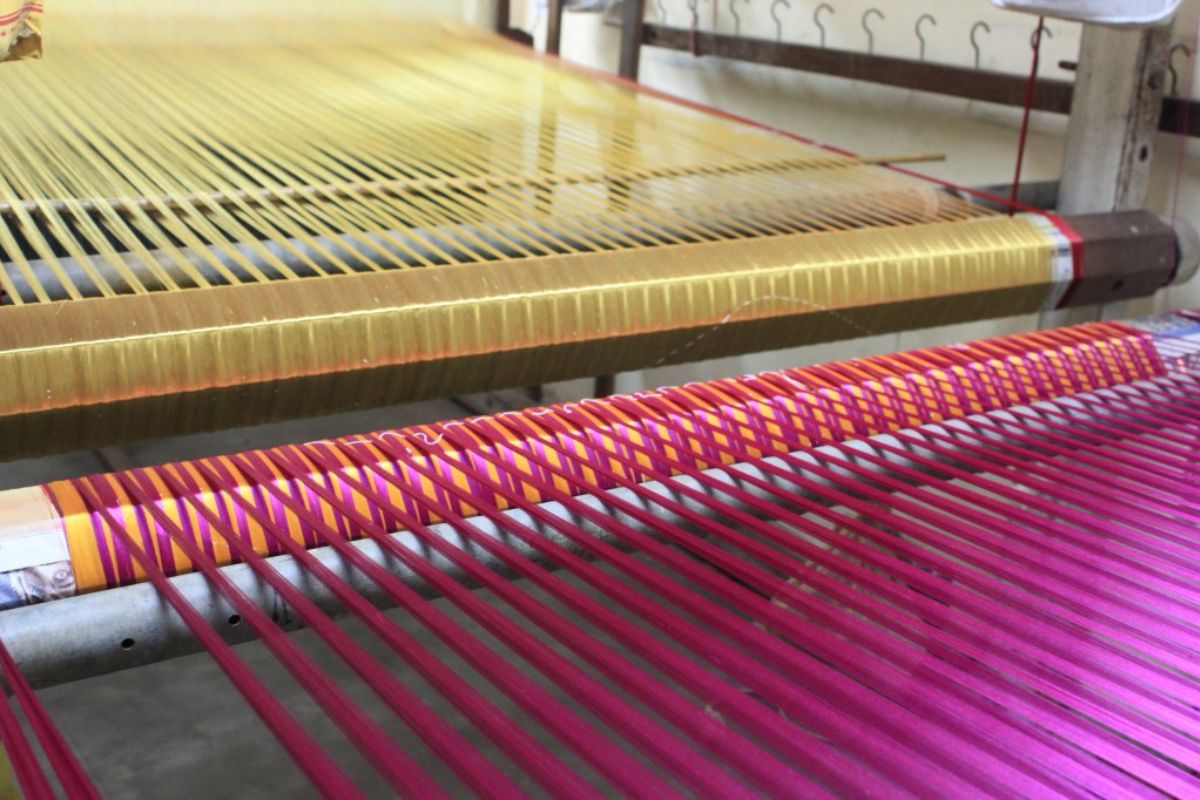
People use Kanchipuram sarees for significant events such as weddings together with festivals. They are a symbol of Tamil Nadu’s rich textile heritage and continue to be treasured by women across generations.
Conclusion
Tamil Nadu’s art forms are a reflection of its glorious history, deep spirituality, and vibrant culture. Each art form in Tamil Nadu including the dance tradition of Bharatanatyam and Silambam martial arts possesses its own narrative. For multiple centuries these artistic traditions have survived through many historical shifts until now.
Different government departments together with cultural organizations maintain focused efforts to protect as well as boost these artistic traditions. Schools together with festivals and academies serve essential functions for sustaining these traditional practices. It is important for the younger generation to take an interest in these art forms and carry forward the rich legacy of Tamil Nadu.
Tamil Nadu’s art forms are not just about entertainment—they are a way of life, a means of devotion, and a representation of Tamil identity. As long as these traditions are respected and practiced, the artistic spirit of Tamil Nadu will continue to shine for generations to come.
Also Read: Art Forms of Karnataka: A Cultural Kaleidoscope
You can connect with DNN24 on Facebook, Twitter, and Instagram and subscribe to our YouTube channel.

